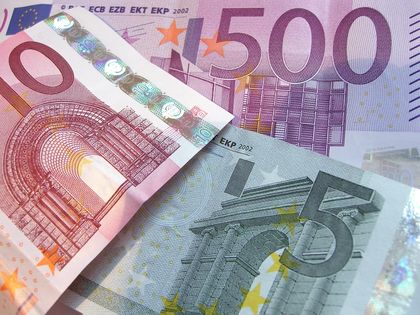GRAY MARKET

The gray market refers to those goods that are legitimately imported from abroad, carry a recognizable trademark or brand name, and are sold at significant discounts outside of the manufacturer's normal channels of distribution. The practice of gray marketing has affected a wide range of consumer and other products, including personal computers, automobiles, perfume, cameras, watches, film, and semiconductors. The profits of gray marketers are sensitive to international exchange rates, and they tend to thrive during times when the U.S. dollar is strong in relation to other world currencies.
Gray marketing is a form of arbitrage, in which gray marketers buy goods in markets where prices are lower and sell the same goods in different markets where prices are higher. The greater the price differential, the great the profits for gray marketers. For example, with currency problems plaguing Asian countries in 1997 and 1998, the market there for some types of heavy machinery dried up and prices declined substantially. Since this same heavy machinery was in high demand in North America, gray marketers achieved substantial profits by purchasing the machinery in Asia and selling it in North America. It was estimated that gray market sales would account for 10 percent of the heavy machinery industry's North American sales in 1999.
While gray market goods are legally imported from abroad, the importer is typically not one of the manufacturer's authorized distributors. The importer, who may obtain the goods from the excess inventory of authorized dealers, then turns around and sells them at substantial discounts outside of the manufacturer's authorized distribution channels. Gray market goods are not counterfeit goods; their trademarks are genuine. Purchasing gray market goods can result in substantial savings for consumers, but the practice also has its risks. Consumer products such as automobiles that are manufactured outside of the United States may have been built to different specifications and with different materials. Imported gray market automobiles, for example, must be modified by Environmental Protection Agency-approved independent commercial importers to meet federal emission standards.
Gray market goods are typically sold without any of the original manufacturer's warranties. Some independent companies have stepped in and offered to sell warranties for selected gray market products. Other problems a consumer may encounter include being unable to obtain factory service and other support from the original manufacturer.
The essential feature of gray market goods is that they are sold outside of the manufacturer's authorized distribution outlets. In 1984 IBM was the victim of gray marketers who accounted for as much as 10 percent of the company's personal computer sales. These gray marketers were high-volume purchasers who received a substantial discount from IBM, then resold the computers to unauthorized dealers. IBM sought to trace the gray marketers using serial numbers on the computers and cut off sales to them.
Gray marketers have been the target of litigation on the part of manufacturers for the past decade and longer. Even though court decisions have generally failed to outlaw the practice, a group of authorized distributors formed the Coalition to Preserve the Integrity of American Trademarks (Copiat) in 1984 to challenge gray marketing. That year an estimated $7 billion of discounted gray market goods entered the United States. Manufacturers argue that gray marketing undermines and discourages investment in legitimate distribution channels, especially in developing nations. They also believe that gray market goods have a negative impact on the value of established brand names—brands the manufacturers have invested a lot of money in to develop.
While gray marketing is not illegal in the United States and Canada, the European Union (EU) has banned gray market goods, or parallel imports, into the EU from non-EU countries. The EU ban prevents gray marketers from undercutting high EU prices for branded goods by importing them from cheaper markets. Under current EU laws, however, gray market goods imported from one EU-member country into another remain legal. Prior to the EU ban, some American manufacturers were successful in preventing gray marketing in some European countries based on the laws of those countries.
[ David P. Bianco ]
FURTHER READING:
Alger, Alexandra. "'Gray' Watches." Forbes, I I August 1997, 151.
Champion, David. "The Bright Side of Gray Markets." Harvard Business Review, September-October 1998, 19-20.
"Hong Kong Debates Role of Gray Goods." Journal of Commerce and Commercial, 9 December 1996, IA.
Israel, Beatrice. "Ford Wins Suit against Importer." Automotive News, 4 August 1997, 10.
Lipner, Seth E. The Legal and Economic Aspects of Gray Market Goods. New York: Quorum Books, 1990.
Picard, Jacques. "The Legality of International Gray Marketing: A Comparison of the Position in the United States, Canada, and the European Union." Canadian Business Law Journal, April 1996, 422-38.
Taylor, Alex, III, and Cindy Kano. "The Cult of the Astro Van: How to Captivate the Japanese Consumer." Fortune, 18 August 1997, 44-45.
"When Grey Is Good: The European Union Should Be Encouraging 'Grey' Imports, Not Banning Them." Economist, 22 August 1998, 17.
Wood, Christina. "Software That Fell Off a Truck." PC World, February 1998, 45.
Yatsko, Pamela. "Another Way In: China's 'Grey Channels' Are a Boon—and a Trap." Far Eastern Economic Review, 5 December 1996, 63-65.
Yengst, Charles R. "The Wave Coming in This Direction Is Not El Nino, but Instead Gray Iron." Diesel Progress North American Edition, March 1998, 4.
Comment about this article, ask questions, or add new information about this topic: